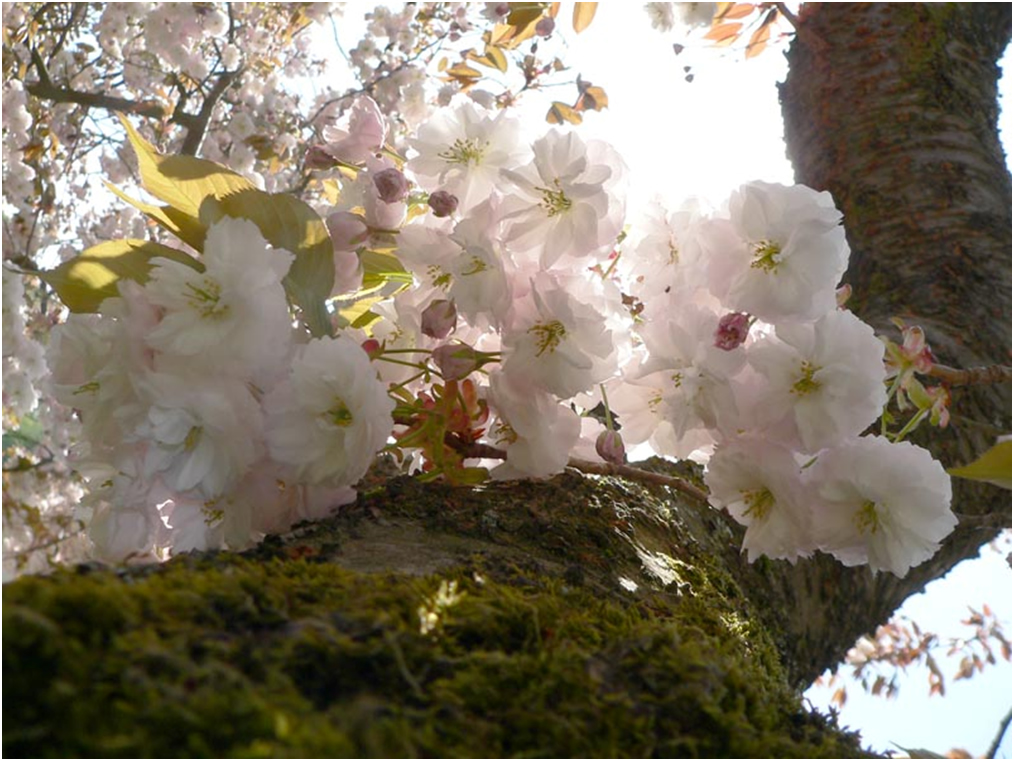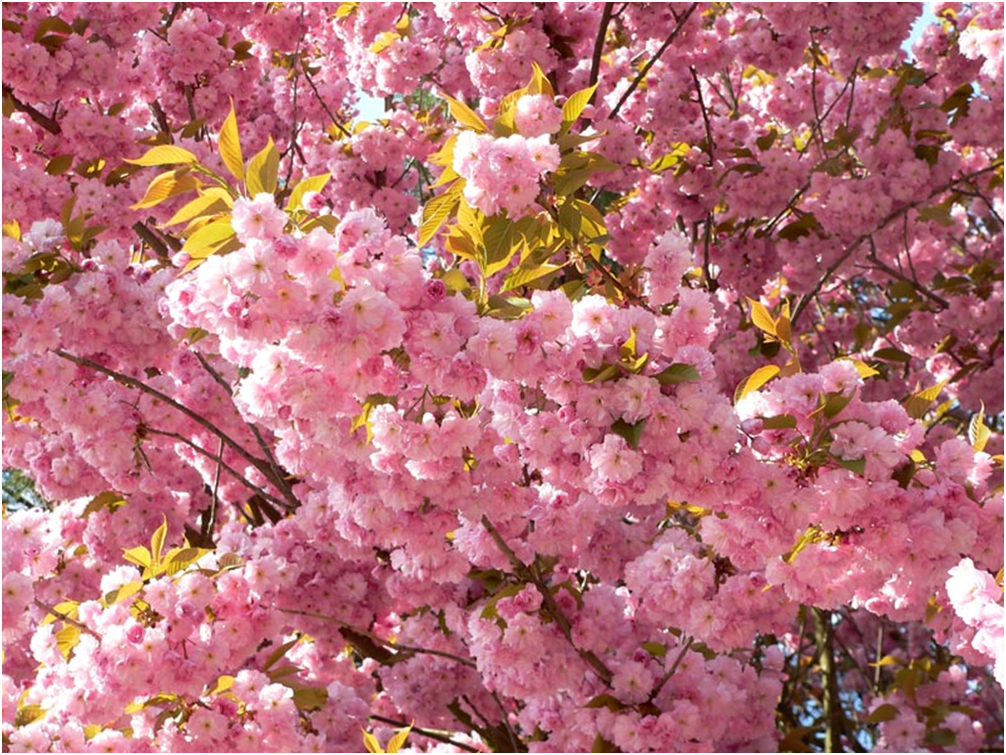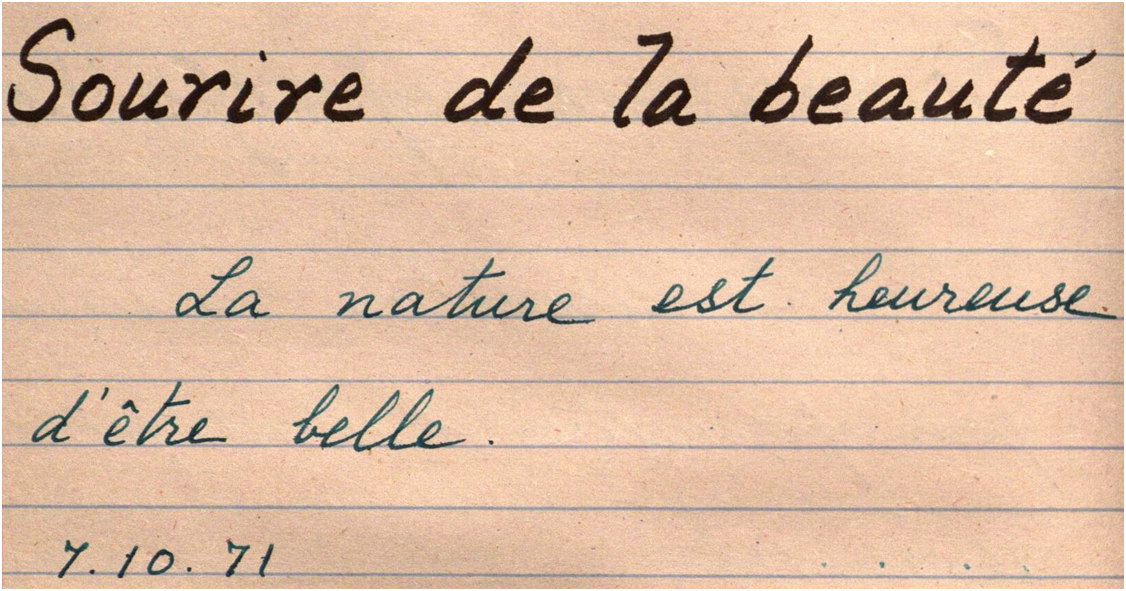
Mother’s Garden – May 2012
Cherry Trees and Flower Significances
Other than the first major revision of the nearly 900 significances Mother gave to flowers and the subsequent two-volume edition with colour photographs, there has not been much written on the messages that flowers give to the world. It is well documented that some people have the ability to see fairies at work in the garden and in fact in all of Nature. What we need now are people to develop the inner communication with flowers to be able to give their essential message or ‘spiritual significance’ to the world.
How is this to be done? Here are the questions that were asked and Mother’s answer.
Mother, when flowers are brought to you, how do you give them a significance?
Mother:By entering into contact with the nature of the flower, its inner truth. Then one knows what it represents.
Mother, how do you give a significance to a flower?
Mother: By entering into contact with it and giving a meaning, more or less precise, to what I feel.
Mother, each flower has its own significance, doesn't it?
Mother: Not as we understand it mentally. There is a
mental projection when one gives a precise significance to a flower. ...
A flower does not have the equivalent of a mental consciousness. ... It
is rather like the movement of a little baby, neither a sensation nor a
feeling, but something of both; it is a spontaneous movement, a very
special vibration. Well, if one is in contact with this vibration, if
one feels it, one receives an impression which may be translated by a
thought. This is how I give a significance to flowers and plants. There
is a kind of identification with the vibration, a perception of the
quality it represents, and gradually through a kind of approximation
(sometimes it comes suddenly, occasionally it takes time) there is a
convergence of these vibrations, which are of a vital-emotional order,
and the vibration of mental thought, and if there is sufficient accord
one has a direct perception of what the plant may signify.
In some countries, particularly here in India, certain plants are used for worship, offering, devotion. Some plants are given on special occasions. I have often seen that this identification is in agreement with the nature of the plant, because it happened that spontaneously, without knowing anything, I gave the same meaning as that given in religious ceremonies. The vibration was really there in the flower itself . . . Did that come from the use that has been made of it, or did it come from very far, from somewhere deep down, from a beginning of the psychic life? It is difficult to say.
The message of the blossoms of the cherry tree as given by Mother is:
Smile of Beauty
Mother’s comment in Her hand:

Nature is happy to be beautiful.
In this issue we look deeply into the cherry trees and their blossoms, their significance and symbolism. There are so many species and hybrids that we shall only be able to mention the cultivars growing in Mother’s Garden.
When Mother lived in Japan she saw cherry trees in full bloom in the spring, a sight never to be forgotten. Japanese poets , especially the Haiku poets, have composed verses on the cherry.
Here is a lovely one by Issa:
Under the branches
Of the cherry-trees in bloom,
None are strangers there.
Issa
And two Haiku by Basho – most likely on the cherry blossoms
The temple bell stops.
But the sound keeps coming
out of the flowers.
all the more I wish to see
in those blossoms at dawn
the face of a god
Basho
Viewing cherry trees is the most important highlight of the spring season in Japan and each year a Cherry Blossom Festival celebrates the beauty of the cherry blossoms.
In Mother’s Garden there are many cherry trees and their pink or white clouds bringweeks of beauty in early spring.
Prunusserrulata, the Oriental Cherry of Japanese Flowering Cherry has many cultivars such as ‘Kwanzan’. For me all the Cherry trees speak of the ‘Smile of Beauty’. The species below is Prunussubhirtellaautumnalis. Prunus is the genus (botanical name) for all cherry trees and many other similar trees such as plums. peaches and apricots. These three trees are breathtakingly beautiful with more than 10,00 daffodils (Power of Beauty) in the foreground and throughout Mother’s Garden.
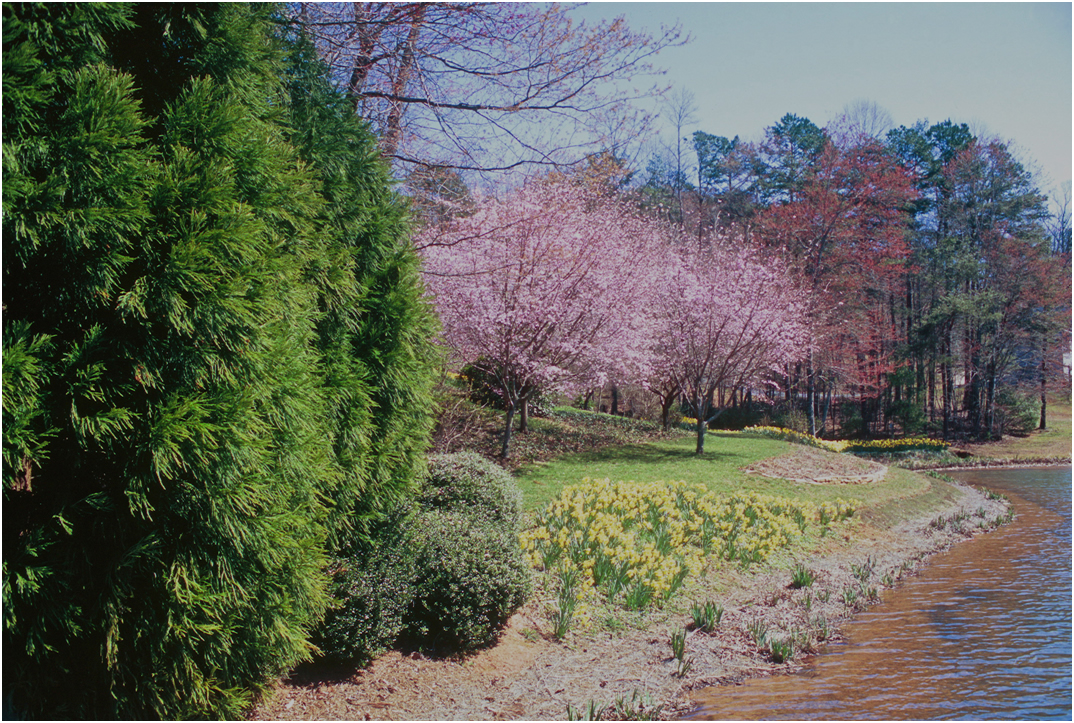
An Experience
A deep concentration seized on me, and I perceived that I was identifying myself with a single cherry-blossom, then through it with all cherry-blossoms, and, as I descended deeper in the consciousness, following a stream of bluish force, I became suddenly the cherry-tree itself, stretching towards the sky like so many arms its innumerable branches laden with their sacrifice of flowers. Then I heard distinctly this sentence:
“Thus has thou made thyself one with the soul of the cherry-trees and so thou canst take note that it is the Divine who makes the offering of this flower-prayer to heaven.”
When I had written it, all was effaced, but now the blood of the cherry-tree flows in my veins and with it flows an incomparable peace and force. What difference is there between the human body and the body of a tree? In truth, there is none: the consciousness which animates them is identically the same.
Then the cherry-tree whispered in my ear:
“It is in the cherry-blossom that lies the remedy for the disorders of the spring.”
There are certain illnesses that people get particularly in Spring – boils, impurities of the blood, etc.
– which the Japanese cure with teas made from cherry-blossoms. I did not know this when I had the experience.
The Mother
Delight is the soul of existence, beauty the intense impression, the concentrated form of delight. . . .
Sri Aurobindo
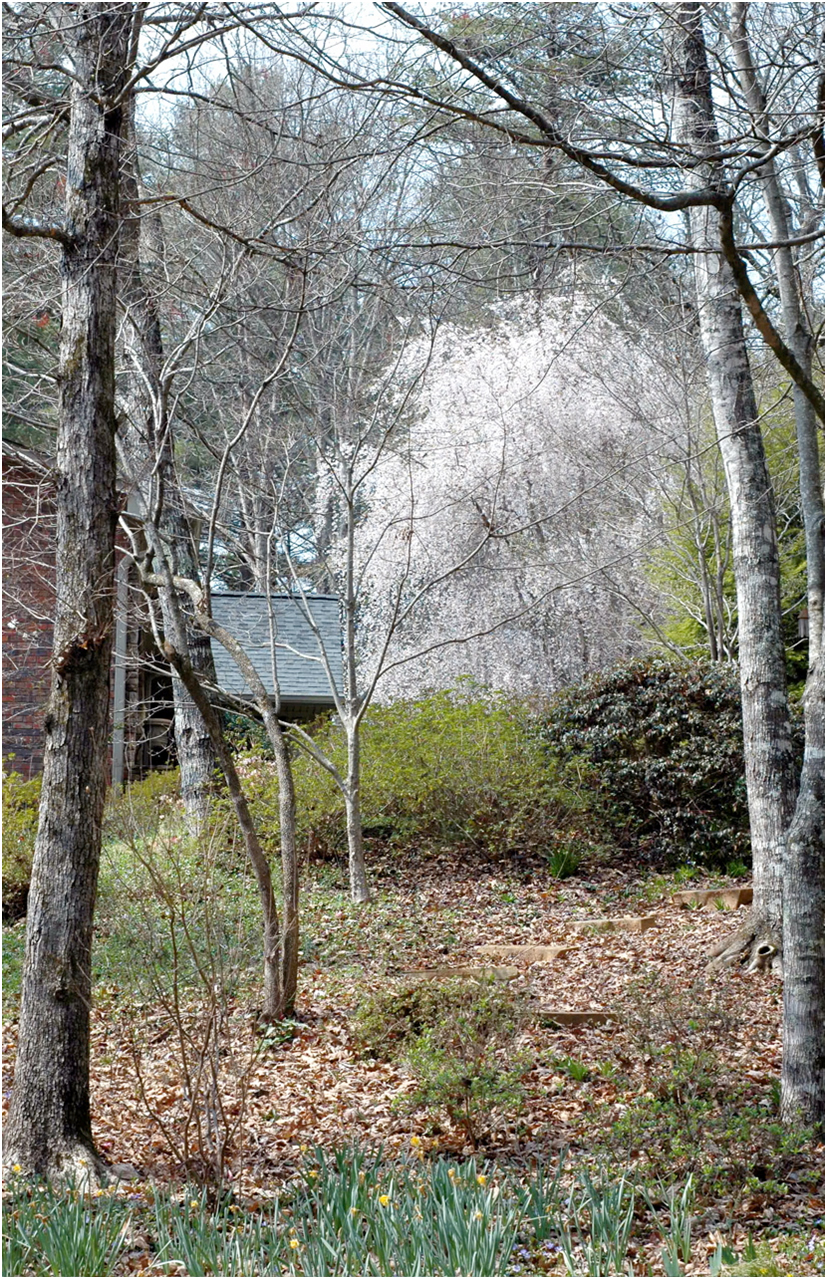
This majestic ‘Weeping Cherry’ towering above all the trees in the area opens light pink and then turns white. It flowers in mid March when the weather is still quite cool with occasional temperatures briefly below freezing. A pink variety was planted by the lake this past autumn and promises great beauty in the coming years.
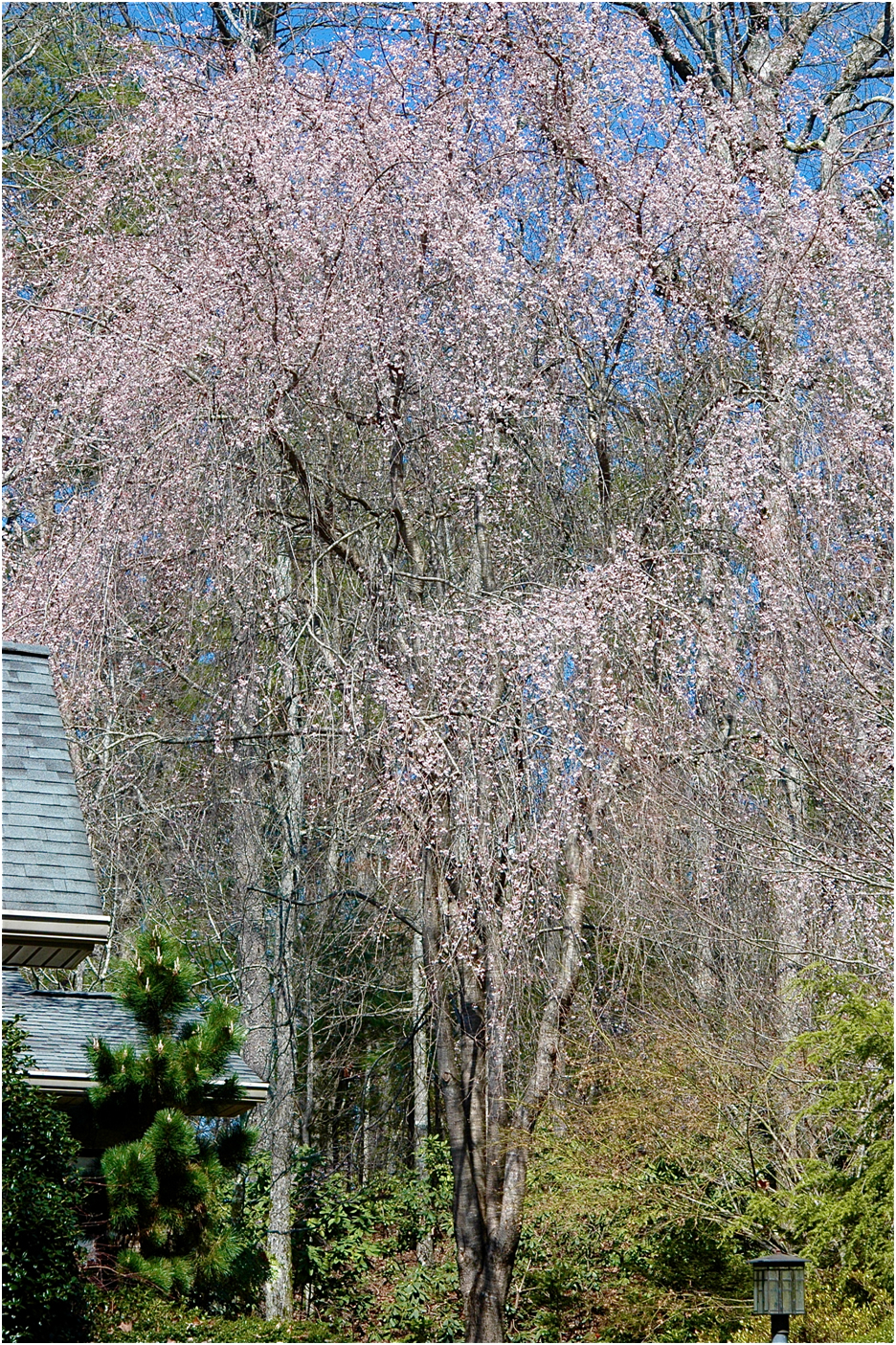

The ‘Kwanzan’ cherry is a double flowered variety blooming in April and extending the beauty of the cherry tree season.
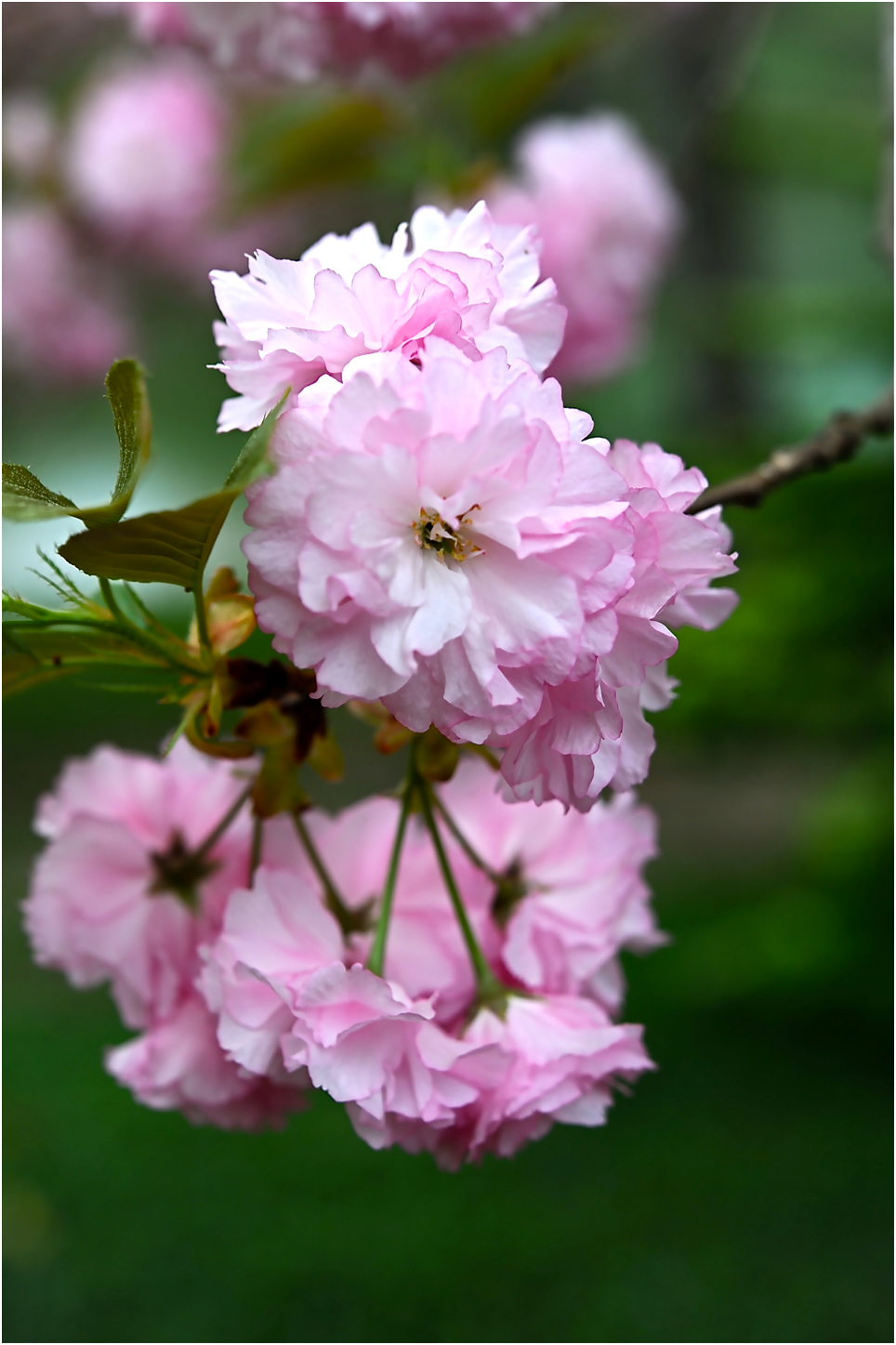
A close-up the beautiful blossoms of the ‘Kwanzan’ cherry.

Another view of the mature ‘Kwanzan’ cherry tree in bloom.
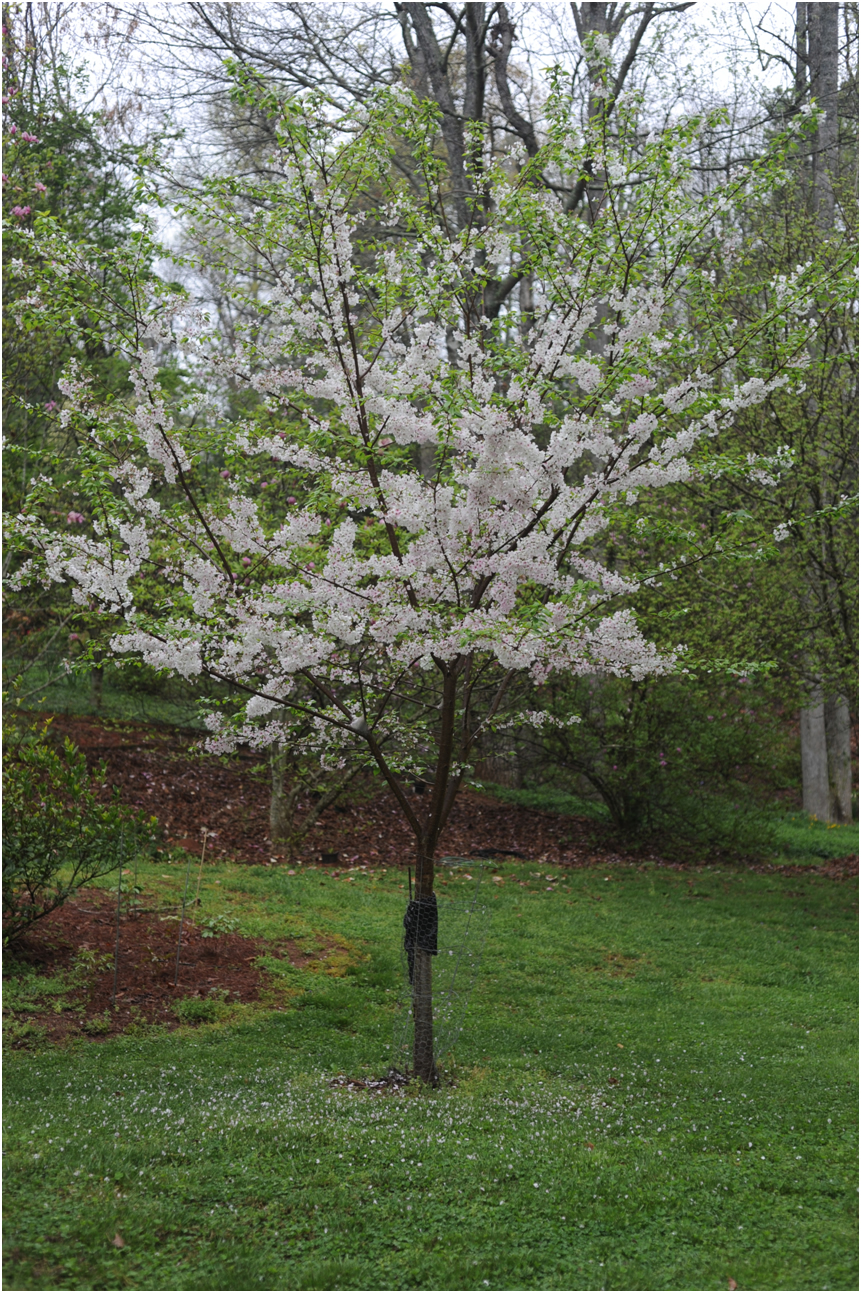
A young ‘Yoshino’ cherry, one of the most beloved in Japan. The flowers buds are pink and open pale pink changing quickly to white. Mature trees are an enchanting sight.
It is possible to do one’s entire sadhana through communication with the flowers. By loving them and developing a strong inner contact with them it will be possible to absorb the highest vibrations they emit, helping us to intensify our aspiration for light.
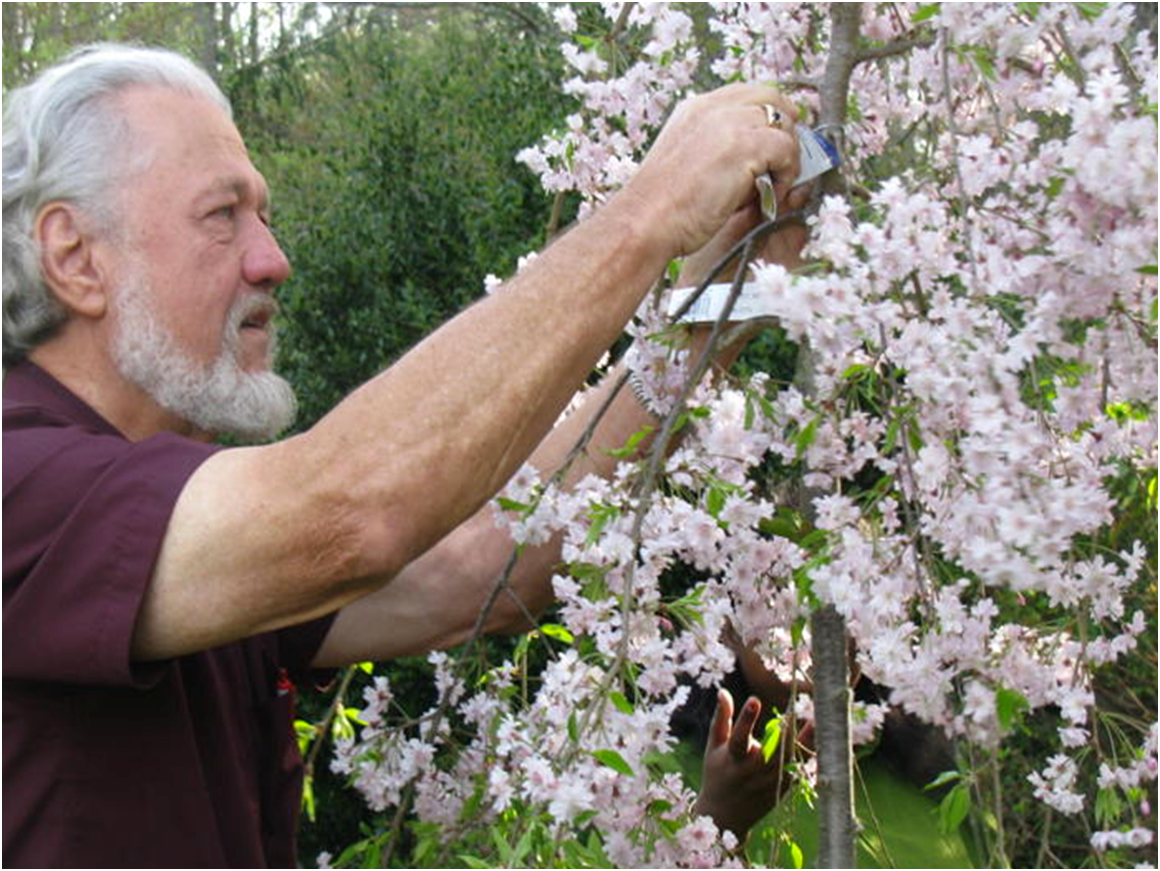
A pink ‘Weeping Cherry’ just planted
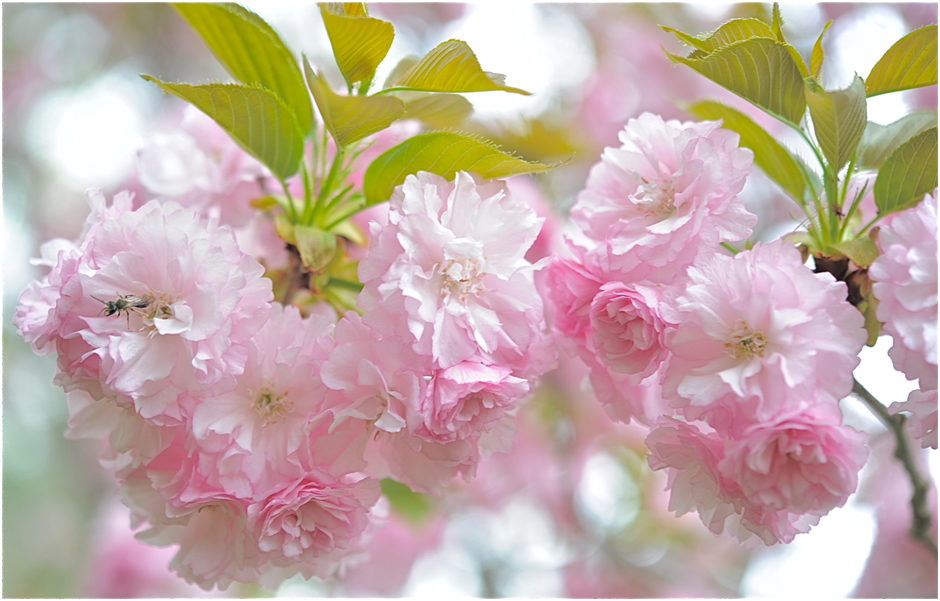
Some beautiful photos of cherry trees in Japan

